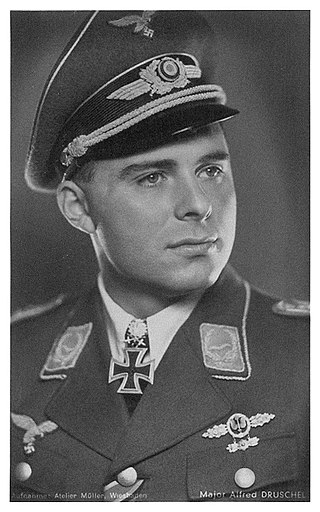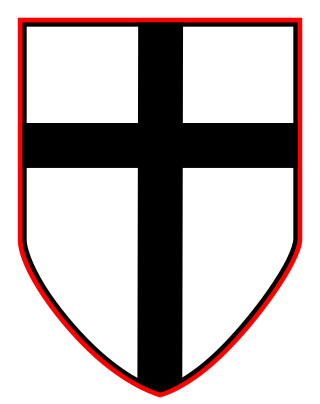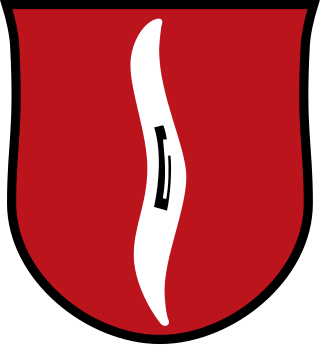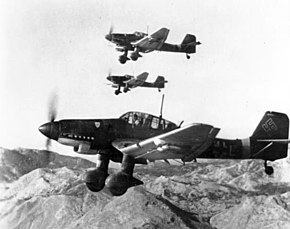
Alfred Druschel was a German Luftwaffe combat pilot during World War II. He was a recipient of the Knight's Cross of the Iron Cross with Oak Leaves and Swords of Nazi Germany.

Sturzkampfgeschwader 2 Immelmann was a Luftwaffe dive bombing squadron wing of World War II. It was named after the World War I aviator Max Immelmann. It served until its dissolution in October 1943. The wing operated the Junkers Ju 87 Stuka exclusively.
Schlachtgeschwader 2 Immelmann was a Luftwaffe dive-bomber wing of World War II. It was named after Max Immelmann, the first German pilot to earn the Pour le Mérite.

Detachment Kuhlmey was a temporary unit of Nazi Germany's Luftwaffe during World War II. The unit was commanded by Oberstleutnant Kurt Kuhlmey and the detachment was built around the unit Schlachtgeschwader 3, which also was commanded by Kuhlmey.

Kampfgeschwader 4 "General Wever" was a Luftwaffe bomber wing during World War II. The unit was formed in May 1939. The unit operated the Dornier Do 17, Junkers Ju 88 and Heinkel He 111 medium bombers, with later service on the Heinkel He 177 heavy bomber. The wing was named after General Walther Wever, the prime pre-war proponent for a strategic bombing capability for the Luftwaffe, who was killed in an aircraft accident in 1936.
Paul-Werner Hozzel was a ground attack pilot in the Luftwaffe of Nazi Germany during World War II. He was a recipient of the Knight's Cross of the Iron Cross. Following the war, Hozzel joined the Bundeswehr of West Germany and retired as Brigadegeneral.

Schlachtgeschwader 1 was a German Luftwaffe wing during World War II. It operated the Henschel Hs 123, Henschel Hs 129, Focke-Wulf Fw 190, and the Messerschmitt Bf 109.
Kampfgeschwader 51 "Edelweiss" (KG 51) was a Luftwaffe bomber wing during World War II.

Kampfgeschwader 76 was a Luftwaffe bomber Group during World War II. It was one of the few bomber groups that operated throughout the war.

Kampfgeschwader 53 "Legion Condor" was a Luftwaffe bomber wing during World War II. Its units participated on all of the fronts in the European Theatre until it was disbanded in May 1945. At all times it operated the German bomber type Heinkel He 111. Only the 15th (kroat) Squadron of KG 53, established in Agram (Zagreb) July 1942, operated the Dornier Do 17 Z.
Lehrgeschwader 1 formerly Lehrgeschwader Greifswald was a Luftwaffe multi-purpose unit during World War II, operating fighter, bomber and dive-bomber Gruppen. The unit was formed in July 1936 and operated the Messerschmitt Bf 109, Messerschmitt Bf 110, Dornier Do 17, Heinkel He 111, Junkers Ju 88 and Junkers Ju 87.
Kampfgeschwader 77 was a Luftwaffe bomber wing during World War II. Its units participated on all of the major fronts in the European Theatre until its dissolution in 1944. It operated all three of the major German bomber types; the Dornier Do 17, Heinkel He 111 and the Junkers Ju 88.

Hubertus Hitschhold was a German general and ground-attack pilot during World War II. He was a recipient of the Knight's Cross of the Iron Cross with Oak Leaves of Nazi Germany.

Kampfgeschwader 26 "Löwengeschwader" was a German air force Luftwaffe bomber wing unit during World War II. Its units participated on all of the fronts in the European Theatre until the end of the war. It operated three of the major German aircraft medium bomber types; the Heinkel He 111, Junkers Ju 88 and the Junkers Ju 188. The unit engaged in both strategic bombing, close air support, anti-shipping and aerial interdiction operations. The majority of its operational life – not entirely unlike another Luftwaffe wing designated KG 40 — was spent on anti-shipping missions.

Kampfgeschwader 30 was a Luftwaffe bomber wing during World War II.

Sturzkampfgeschwader 1 was a Luftwaffe dive bomber wing during World War II.

Sturzkampfgeschwader 77 (StG 77) was a Luftwaffe dive bomber wing during World War II. From the outbreak of war StG 77 distinguished itself in every Wehrmacht major operation until the Battle of Stalingrad in 1942. If the claims made by StG 77 are accurate, it inflicted more damage to enemy ground forces than any other wing. It operated the Junkers Ju 87 dive-bomber exclusively in the combat role. The Dornier Do 17 and Messerschmitt Bf 110 were both used in the air reconnaissance role.
'Kampfgeschwader' 27 Boelcke was a Luftwaffe medium bomber wing of World War II.

Sturzkampfgeschwader 3 was a Dive bomber wing in the German Luftwaffe during World War II and operated the Junkers Ju 87 Stuka.
Walter Rudolf Enneccerus was an officer in the Luftwaffe during World War II and a recipient of the Knight's Cross of the Iron Cross.













